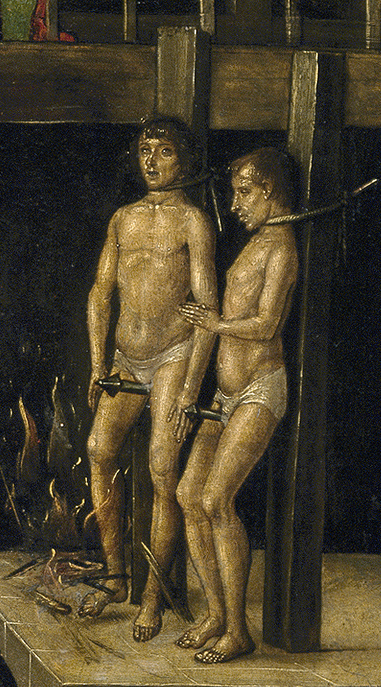|
Harassment
Harassment covers a wide range of behaviors of an offensive nature. It is commonly understood as behavior that demeans, humiliates, and intimidates a person, and it is characteristically identified by its unlikelihood in terms of social and moral reasonableness. In the legal sense, these are behaviors that appear to be disturbing, upsetting, or threatening. Traditional forms evolve from discriminatory grounds, and have an effect of nullifying a person's rights or impairing a person from benefiting from their rights. When harassing behaviors become repetitive, it is defined as bullying. The continuity or repetitiveness and the aspect of distressing, alarming or threatening may distinguish it from insult. It also constitutes a tactic of coercive control, which may be deployed by an abuser in the context of domestic violence. Harassment is a specific form of discrimination, and occurs when a person is the victim of unwanted intimidating, offensive, or humiliating behavior. ... [...More Info...] [...Related Items...] OR: [Wikipedia] [Google] [Baidu] |
Bullying
Bullying is the use of force, coercion, Suffering, hurtful teasing, comments, or threats, in order to abuse, aggression, aggressively wikt:domination, dominate, or intimidate one or more others. The behavior is often repeated and habitual. One essential prerequisite is the perception (by the bully or by others) that an imbalance of physical or Power (social and political), social power exists or is currently present. This perceived presence of physical or Social relation, social imbalance is what distinguishes the behavior from being interpreted or perceived as ''bullying'' from instead being interpreted or perceived as ''Conflict (process), conflict''. Bullying is a subcategory of aggressive behavior characterized by hostility, hostile intent, the goal (whether consciously or subconsciously) of addressing or attempting to Abusive power and control, "fix" the imbalance of power, as well as repetition over a period of time. Bullying can be performed individually or by a group ... [...More Info...] [...Related Items...] OR: [Wikipedia] [Google] [Baidu] |
Intimidation
Intimidation is a behaviour and legal wrong which usually involves deterring or coercing an individual by threat of violence. It is in various jurisdictions a crime and a civil wrong (tort). Intimidation is similar to menacing, coercion, terrorizing and assault in the traditional sense. This includes intentional behaviors of forcing another person to experience general discomfort such as humiliation, embarrassment, inferiority, limited freedom, etc and the victim might be targeted based on multiple factors like gender, race, class, skin color, competency, knowledge, wealth, temperament, etc. Intimidation is done for making the other person submissive (also known as cowing), to destabilize/undermine the other, to force compliance, to hide one's insecurities, to socially valorize oneself, etc. There are active and passive coping mechanisms against intimidation that include, but are not limited to, not letting the intimidator invade your personal dignity and space, addressing thei ... [...More Info...] [...Related Items...] OR: [Wikipedia] [Google] [Baidu] |
Discrimination
Discrimination is the process of making unfair or prejudicial distinctions between people based on the groups, classes, or other categories to which they belong or are perceived to belong, such as race, gender, age, class, religion, or sexual orientation. Discrimination typically leads to groups being unfairly treated on the basis of perceived statuses based on ethnic, racial, gender or religious categories. It involves depriving members of one group of opportunities or privileges that are available to members of another group. Discriminatory traditions, policies, ideas, practices and laws exist in many countries and institutions in all parts of the world, including some, where such discrimination is generally decried. In some places, countervailing measures such as quotas have been used to redress the balance in favor of those who are believed to be current or past victims of discrimination. These attempts have often been met with controversy, and sometimes been called re ... [...More Info...] [...Related Items...] OR: [Wikipedia] [Google] [Baidu] |
Humiliation
Humiliation is the abasement of pride, which creates mortification or leads to a state of being Humility, humbled or reduced to lowliness or submission. It is an emotion felt by a person whose social status, either by force or willingly, has just decreased. It can be brought about through intimidation, physical or mental mistreatment or trickery, or by embarrassment if a person is revealed to have committed a socially or legally unacceptable act. Whereas humility can be sought alone as a means to de-emphasize the ego, humiliation must involve other person(s), though not necessarily directly or willingly. Humiliation is currently an active research topic, and is now seen as an important – and complex – core dynamic in human Interpersonal relationship, relationships, having implications at intrapersonal, interpersonal, institutional and international levels.Lindner, Evelin, Making Enemies: Humiliation and International Conflict. London, England: Praeger Security Internationa ... [...More Info...] [...Related Items...] OR: [Wikipedia] [Google] [Baidu] |
Discrimination
Discrimination is the process of making unfair or prejudicial distinctions between people based on the groups, classes, or other categories to which they belong or are perceived to belong, such as race, gender, age, class, religion, or sexual orientation. Discrimination typically leads to groups being unfairly treated on the basis of perceived statuses based on ethnic, racial, gender or religious categories. It involves depriving members of one group of opportunities or privileges that are available to members of another group. Discriminatory traditions, policies, ideas, practices and laws exist in many countries and institutions in all parts of the world, including some, where such discrimination is generally decried. In some places, countervailing measures such as quotas have been used to redress the balance in favor of those who are believed to be current or past victims of discrimination. These attempts have often been met with controversy, and sometimes been called re ... [...More Info...] [...Related Items...] OR: [Wikipedia] [Google] [Baidu] |
Coercive Control
Coercion involves compelling a party to act in an involuntary manner through the use of threats, including threats to use force against that party. It involves a set of forceful actions which violate the free will of an individual in order to induce a desired response. These actions may include extortion, blackmail, or even torture and sexual assault. Common-law systems codify the act of violating a law while under coercion as a duress crime. Coercion used as leverage may force victims to act in a way contrary to their own interests. Coercion can involve not only the infliction of bodily harm, but also psychological abuse (the latter intended to enhance the perceived credibility of the threat). The threat of further harm may also lead to the acquiescence of the person being coerced. The concepts of coercion and persuasion are similar, but various factors distinguish the two. These include the intent, the willingness to cause harm, the result of the interaction, and the options ... [...More Info...] [...Related Items...] OR: [Wikipedia] [Google] [Baidu] |
Old Dutch
In linguistics, Old Dutch ( Modern Dutch: ') or Old Low Franconian (Modern Dutch: ') is the set of dialects that evolved from Frankish spoken in the Low Countries during the Early Middle Ages, from around the 6th Page 55: "''Uit de zesde eeuw dateren de oudst bekende geschreven woorden en tekstjes in de Lage Landen, waarmee de periode van het oud-Nederlands begint.''" rom the 6th century date the oldest known text from the Low Countries, with which the period of Old Dutch begins./ref> to the 12th century. Old Dutch is mostly recorded on fragmentary relics, and words have been reconstructed from Middle Dutch and Old Dutch loanwords in French. Old Dutch is regarded as the primary stage in the development of a separate Dutch language. It was spoken by the descendants of the Salian Franks who occupied what is now the southern Netherlands, northern Belgium, part of northern France, and parts of the Lower Rhine regions of Germany. It evolved into Middle Dutch around the 12th ce ... [...More Info...] [...Related Items...] OR: [Wikipedia] [Google] [Baidu] |
Romanization Of Arabic
The romanization of Arabic is the systematic rendering of Modern Standard Arabic, written and varieties of Arabic, spoken Arabic language, Arabic in the Latin script. Romanized Arabic is used for various purposes, among them transcription of names and titles, cataloging Arabic language works, language education when used instead of or alongside the Arabic script, and representation of the language in scientific publications by Linguistics, linguists. These formal systems, which often make use of diacritics and non-standard Latin characters, are used in academic settings for the benefit of non-speakers, contrasting with informal means of written communication used by speakers such as the Latin-based Arabic chat alphabet. Different systems and strategies have been developed to address the inherent problems of rendering various Arabic varieties in the Latin script. Examples of such problems are the symbols for Arabic phonemes that do not exist in English language, English or other ... [...More Info...] [...Related Items...] OR: [Wikipedia] [Google] [Baidu] |
Arabian Horse
The Arabian or Arab horse ( , DIN 31635, DMG ''al-ḥiṣān al-ʿarabī'') is a horse breed, breed of horse with historic roots on the Arabian Peninsula. With a distinctive head shape and high tail carriage, the Arabian is one of the most easily recognizable horse breeds in the world. It is also one of the oldest modern breeds. Although modern DNA cannot trace breed purity in the modern population beyond 200 years, there is archaeological evidence of horses in the Middle East with landrace characteristics that resemble modern Arabians dating back 3,500 years. Arabian horses have spread around the world by both war and trade, being used to improve other breeds by adding speed, refinement, endurance, and strong bone. Today, Arabian bloodlines are found in almost every modern breed of riding horse. The Arabian developed in a desert climate and was prized by the nomadic Bedouin people, often being brought inside the family tent for shelter and protection from theft. Selective ... [...More Info...] [...Related Items...] OR: [Wikipedia] [Google] [Baidu] |
Oxford English Dictionary
The ''Oxford English Dictionary'' (''OED'') is the principal historical dictionary of the English language, published by Oxford University Press (OUP), a University of Oxford publishing house. The dictionary, which published its first edition in 1884, traces the historical development of the English language, providing a comprehensive resource to scholars and academic researchers, and provides ongoing descriptions of English language usage in its variations around the world. In 1857, work first began on the dictionary, though the first edition was not published until 1884. It began to be published in unbound Serial (literature), fascicles as work continued on the project, under the name of ''A New English Dictionary on Historical Principles; Founded Mainly on the Materials Collected by The Philological Society''. In 1895, the title ''The Oxford English Dictionary'' was first used unofficially on the covers of the series, and in 1928 the full dictionary was republished in 10 b ... [...More Info...] [...Related Items...] OR: [Wikipedia] [Google] [Baidu] |
American Heritage Dictionary
American(s) may refer to: * American, something of, from, or related to the United States of America, commonly known as the "United States" or "America" ** Americans, citizens and nationals of the United States of America ** American ancestry, people who self-identify their ancestry as "American" ** American English, the set of varieties of the English language native to the United States ** Native Americans in the United States, indigenous peoples of the United States * American, something of, from, or related to the Americas, also known as "America" ** Indigenous peoples of the Americas * American (word), for analysis and history of the meanings in various contexts Organizations * American Airlines, U.S.-based airline headquartered in Fort Worth, Texas * American Athletic Conference, an American college athletic conference * American Recordings (record label), a record label that was previously known as Def American * American University, in Washington, D.C. Sports teams S ... [...More Info...] [...Related Items...] OR: [Wikipedia] [Google] [Baidu] |








